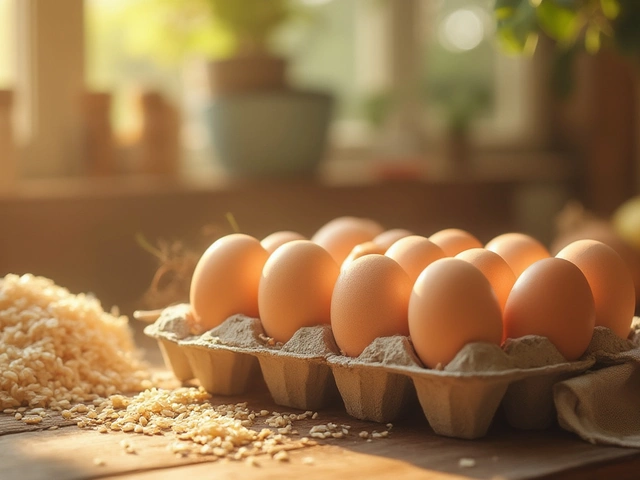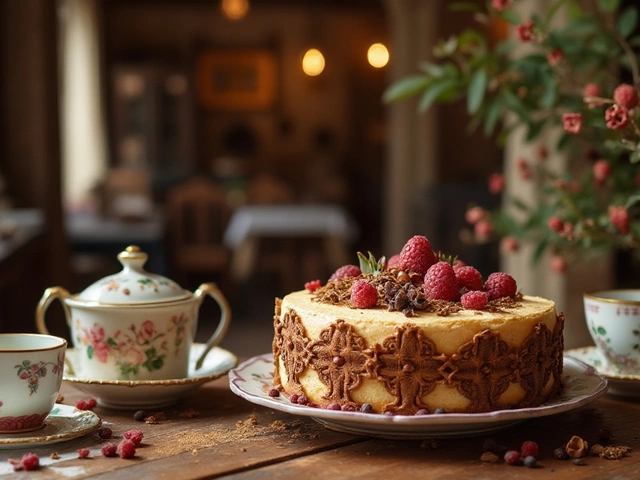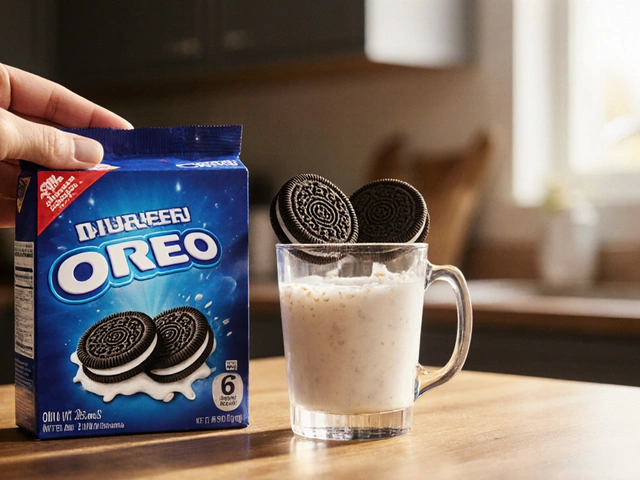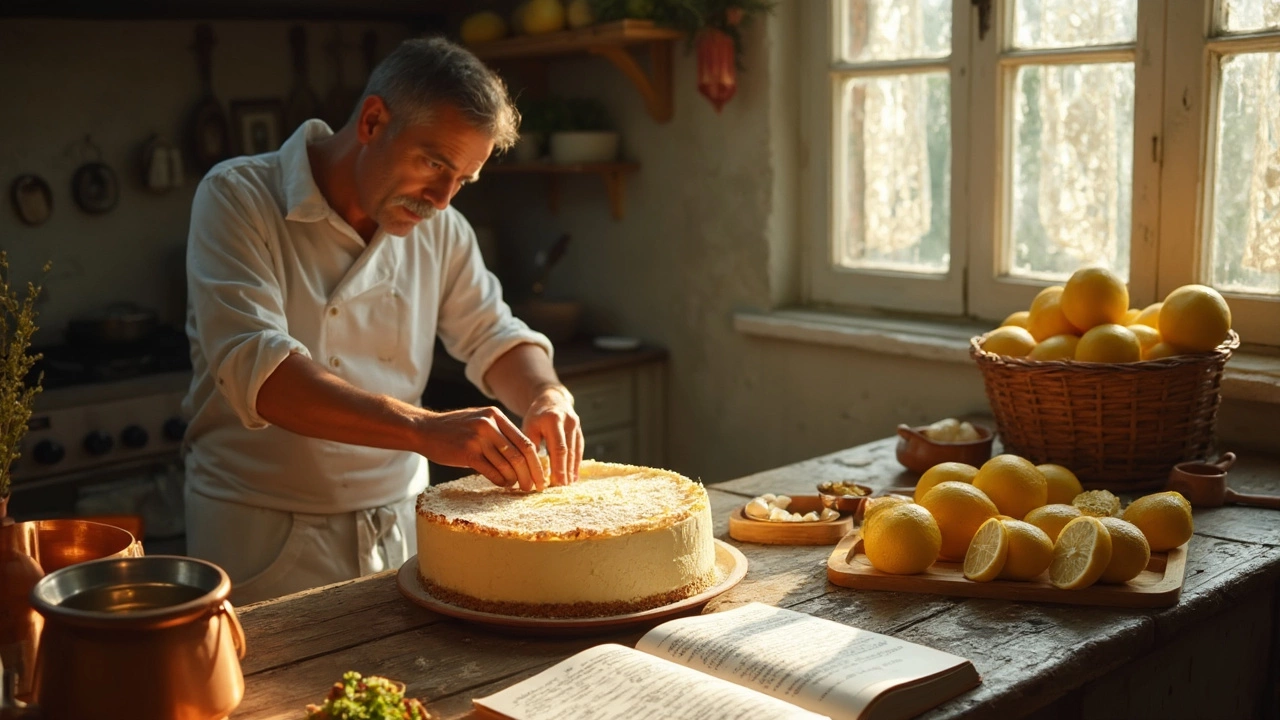
You walk into a bakery, spot a cheesecake, and it looks familiar—but not quite. Slice in, and the difference is obvious. Italian cheesecake isn’t your usual dense, ultra-rich classic slice. The big secret? It starts with the cheese. Regular cheesecakes you see everywhere in the U.S. almost always use cream cheese—think of that thick, silky texture with a tangy finish. But the Italian version flips the script by using ricotta cheese, which makes for a lighter, almost fluffy result and a milder flavor that’s a whole different vibe.
If you’re hunting for a recipe or planning to bake, this isn’t just a fun detail. Your cheese choice totally changes what comes out of the oven. Want something smooth, sweet, and heavy? Go with regular cheesecake. If you’re after a lighter dessert with a bit more bounce and a gentle, creamy flavor, Italian cheesecake is the answer. Keep reading for the real differences between these two crowd favorites, and why Italian cheesecake has its own little corner in the dessert world.
- Cheese Choices: Ricotta vs Cream Cheese
- Texture and Flavor: Creamy or Light?
- Crust Talk: What’s Underneath?
- Baking Tips for Italian and Regular Cheesecakes
Cheese Choices: Ricotta vs Cream Cheese
If you want to get why Italian cheesecake is so distinct, it comes down to one word: ricotta. This cheese has been a staple in Italian desserts for ages. It’s made by re-cooking the leftover whey from other cheese productions, which gives it that soft, slightly grainy texture. Contrast that with the American favorite—cream cheese—which is smooth, dense, and adds a bit of tang.
Take a look at the main differences between these two cheeses used for cheesecake:
| Cheese | Texture | Fat Content (approx. per 100g) | Common Use |
|---|---|---|---|
| Ricotta | Light, fluffy, slightly grainy | 13% | Italian cheesecake, lasagna, cannoli |
| Cream Cheese | Smooth, dense, creamy | 33% | Regular cheesecake, bagels, frosting |
Ricotta’s lower fat means Italian cheesecake is less rich but feels lighter. You’ll notice it doesn’t coat your mouth the same way as regular cheesecake. Ricotta is also less tangy, letting vanilla, lemon zest, or even a splash of almond really stand out. Meanwhile, cream cheese packs a stronger flavor punch and makes for that familiar, heavy New York-style bite.
"Ricotta cheesecake offers a uniquely airy and light experience, while cream cheese brings the classic creamy texture Americans adore," says La Cucina Italiana Magazine.
Some Italian cheesecake recipes even blend in mascarpone, especially in southern Italy, but ricotta is the real classic. If you ever try swapping ricotta and cream cheese, you’ll instantly see the difference. Ricotta-based bakes hold their shape but are never super dense, and they almost melt away as you eat. Cream cheese gives a more solid slice you can really sink your fork into.
Bottom line: picking between ricotta and cream cheese isn’t just about taste. It affects every part of your cheesecake, from fat count to texture and even how you flavor the batter. That’s why when you see "Italian cheesecake," expect something lighter, less rich, and a little more delicate in every bite.
Texture and Flavor: Creamy or Light?
Bite into a slice of Italian cheesecake and you’ll notice it’s got a different feel from the regular kind. Italian cheesecake is usually made with ricotta, which gives it a lighter, airier bite—you might even feel the tiny curds if you look closely. Regular cheesecake sticks to cream cheese, so it ends up rich, dense, and ultra creamy, almost like a thick pudding. The actual texture isn’t just a small difference—it’s a whole new dessert experience.
What’s even more interesting? The taste isn’t the same at all. Ricotta-based cheesecakes have a subtle, milky sweetness, sometimes with hints of citrus or vanilla because Italians love tossing in a bit of lemon zest or orange extract. Classic cheesecakes with cream cheese are more tangy and noticeably heavier in taste and mouthfeel. If flavor isn’t enough to convince you, the nutritional info might:
| Cheesecake Type | Main Cheese | Texture | Flavor |
|---|---|---|---|
| Italian Cheesecake | Ricotta | Light, somewhat grainy | Mild, gently sweet |
| Regular Cheesecake | Cream Cheese | Dense, very creamy | Tangy, rich |
If you know people who say they don’t like cheesecake because it’s "too heavy," chances are they haven’t tried the Italian twist yet. Even the way Italian cheesecake is baked works out differently—it tends to cook at a slightly lower temperature so it doesn’t dry out, and the lighter texture means it doesn’t crack as much on top. Here’s a tip: if you want an even fluffier Italian cheesecake, try folding a few whipped egg whites into the mix before baking. That’s an old trick from Italian kitchens and it works every time.
Whether you’re team creamy or team light, the Italian cheesecake approach offers a refreshing change—and it won’t leave you feeling like you need a nap after dessert. Different textures, different flavors, but both are worth a place at your next dinner table.
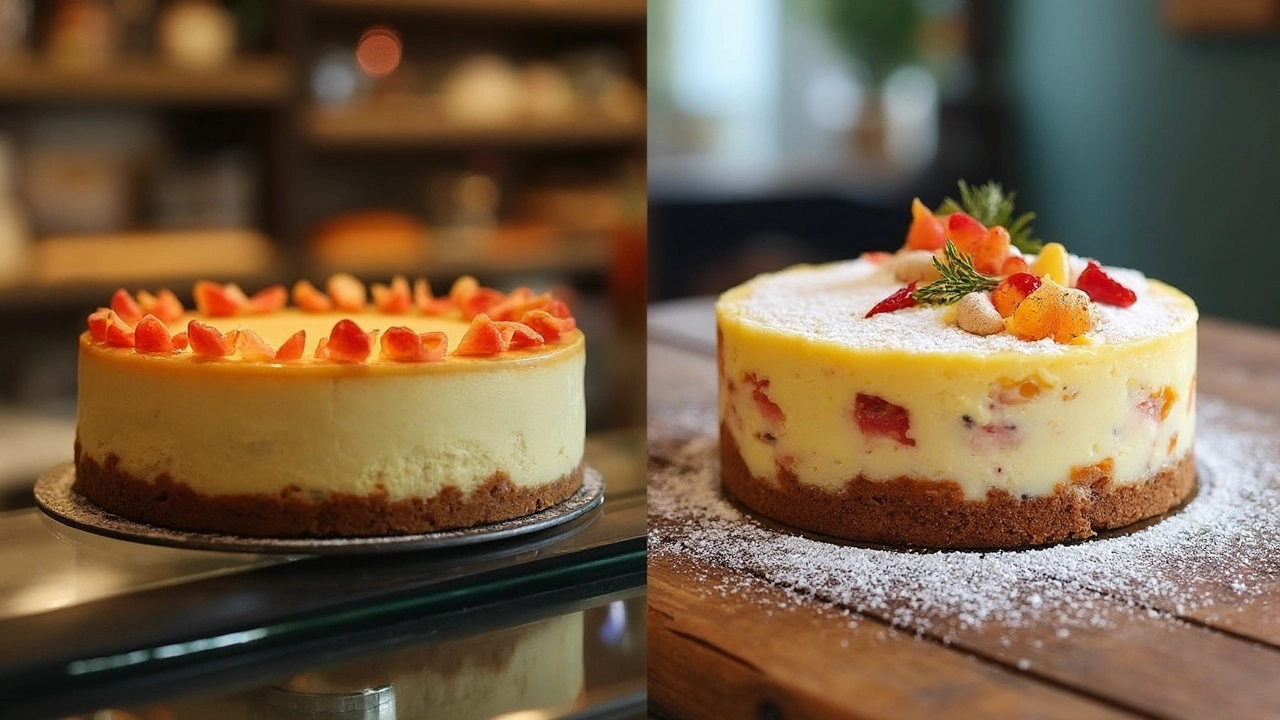
Crust Talk: What’s Underneath?
Most folks would say the crust is half the fun of a cheesecake, but not every cheesecake plays by the same rules. The crust is one of the main spots where classic regular cheesecake and Italian cheesecake go in different directions.
In the standard American-style cheesecake, you almost always get that thick, sweet graham cracker crust. It’s buttery, a little crumbly, and makes the classic combo everyone expects. According to Food Network pastry chef Duff Goldman,
“A good graham cracker crust gives you that perfect salty-sweet crunch under all the creamy filling. It’s basically dessert foundation 101.”
But look at an authentic Italian cheesecake, and boom—sometimes there’s no crust at all! When there is, Italians usually go for something less sweet, like a thin layer of shortcrust pastry (called pasta frolla), or a dusting of breadcrumbs. This keeps the spotlight on the filling, not the base. Some regions in Italy will even skip the crust because ricotta-based fillings keep things stable without needing that ‘glue’ from a crust. If you’re used to that familiar crunch, this can be a surprise.
| Cheesecake Type | Common Crust | Sweetness Level |
|---|---|---|
| Regular Cheesecake | Graham cracker (sometimes cookie or chocolate crust) | High |
| Italian Cheesecake | Shortcrust pastry, breadcrumbs, or none | Low to Moderate |
Want to try an Italian cheesecake but keep the crust? No problem—use a basic shortcrust recipe or even a light almond or biscotti base for something a bit crunchy but not too sweet. Pro tip: Don’t overload on sugar. The milder ricotta filling doesn’t need a sweet punch at the bottom, so keep the crust simple. If you still crave that American touch, a light layer of graham crackers will work, but it won’t be traditional. Bottom line: what’s under your cheesecake might seem like a small detail, but it totally changes the experience—texture, taste, everything. The choice is yours, and honestly, neither is wrong.
Baking Tips for Italian and Regular Cheesecakes
If you’ve ever been nervous about baking cheesecake, you’re not alone. Even experienced bakers worry about cracks or that dreaded soggy center. Whether you’re trying your hand at a classic Italian cheesecake or sticking with regular, knowing a couple of pro tips can mean the difference between dessert glory and total meltdown.
Start with the cheese. For Italian cheesecake, always drain your ricotta, even if the brand claims it’s "dry." A lot of the traditional versions turn out watery if you skip this. Let the ricotta sit in a mesh strainer in your fridge for at least two hours. For a regular cheesecake, room temp cream cheese is essential—it blends far smoother and helps avoid lumps.
Here’s what you need to keep in mind while baking:
- Mix gently. Overmixing either batter can cause too much air and lead to cracks.
- Use a water bath (bain-marie). This keeps the temperature steady around the cheesecake. It’s nearly required for regular cheesecake’s dense custard texture but is also great for an Italian one if you want it extra creamy.
- Bake low and slow. Both cheesecakes do best around 325°F (163°C). Higher temps can cause splitting or rubbery edges.
- Stop baking when it jiggles. Don’t overbake! The center should still wobble slightly when you nudge the pan. It’ll set up more as it cools.
- Let it chill completely. Cheesecake needs hours—overnight if you can stand the wait. You’ll get the best flavor and cleanest slices.
There’s a sweet quote from cake legend Dorie Greenspan that I always remember:
"Cheesecake is the kind of dessert you have to make with patience; it needs time to settle into itself."
Wondering how baking times and textures usually measure up? Check out this quick side-by-side:
| Feature | Italian Cheesecake | Regular Cheesecake |
|---|---|---|
| Average Bake Time | 50–60 min | 55–70 min |
| Oven Temp | 325°F (163°C) | 325°F (163°C) |
| Texture | Light, a bit grainy | Dense, silky |
| Crack Tendency | Low (less dense) | High (if overbaked or overmixed) |
| Main Cheese | Ricotta | Cream Cheese |
A final tip: room temp ingredients make a smoother batter every time. And if your cheesecake cracks? Don’t sweat it—cover it with berries, powdered sugar, or just embrace the homemade look. You’re baking cake, not making art for an exhibit.



